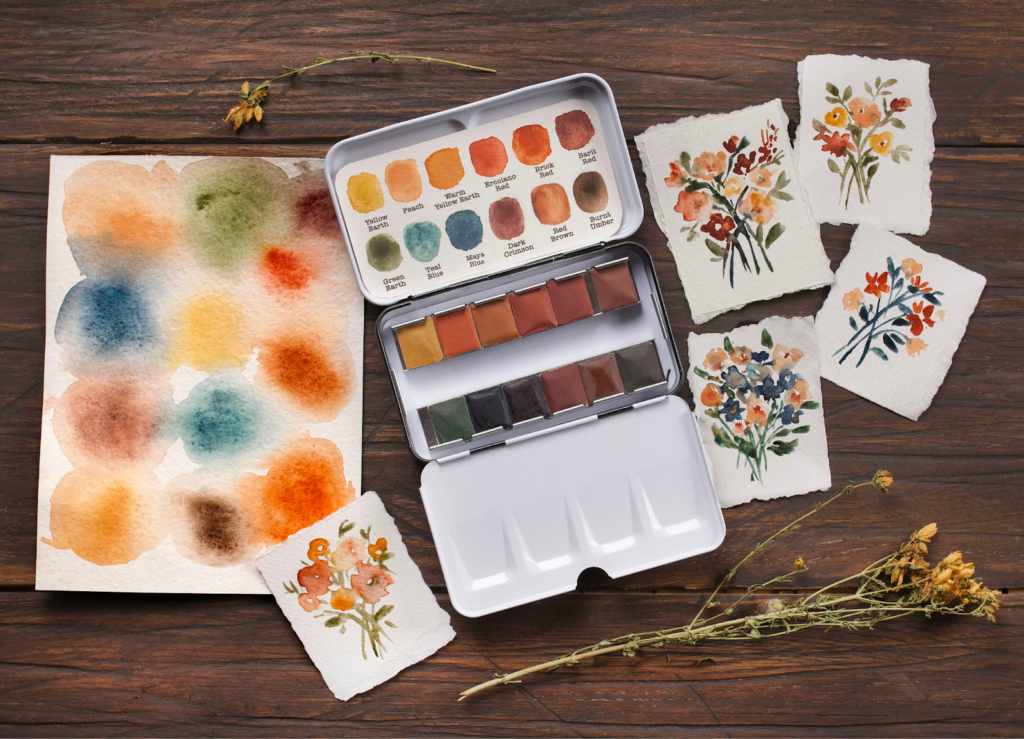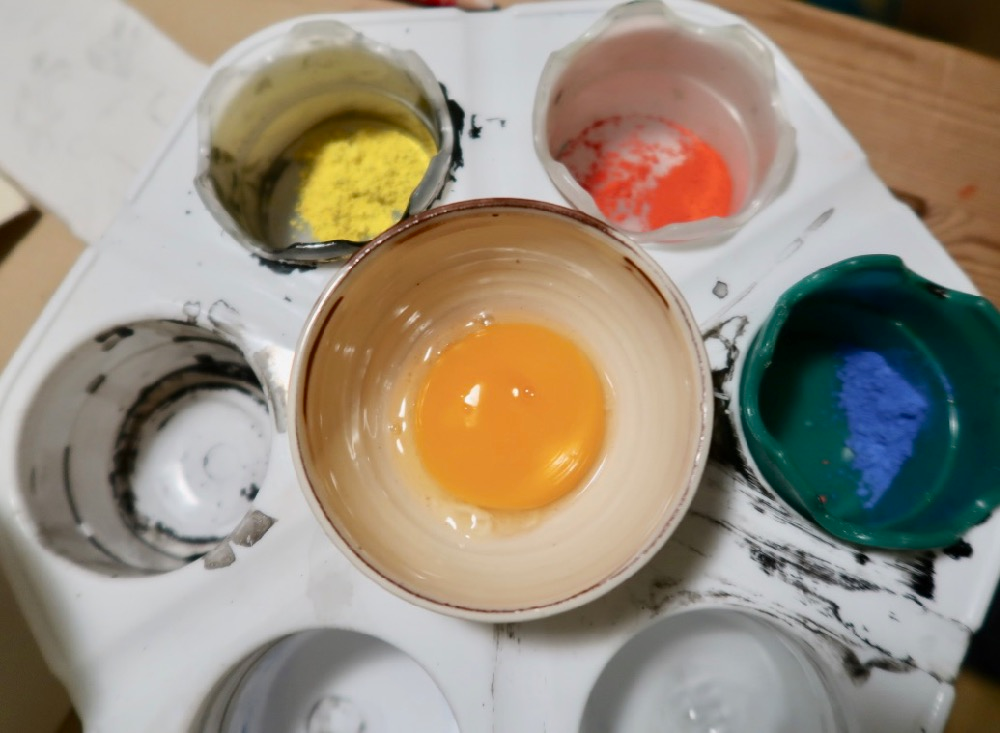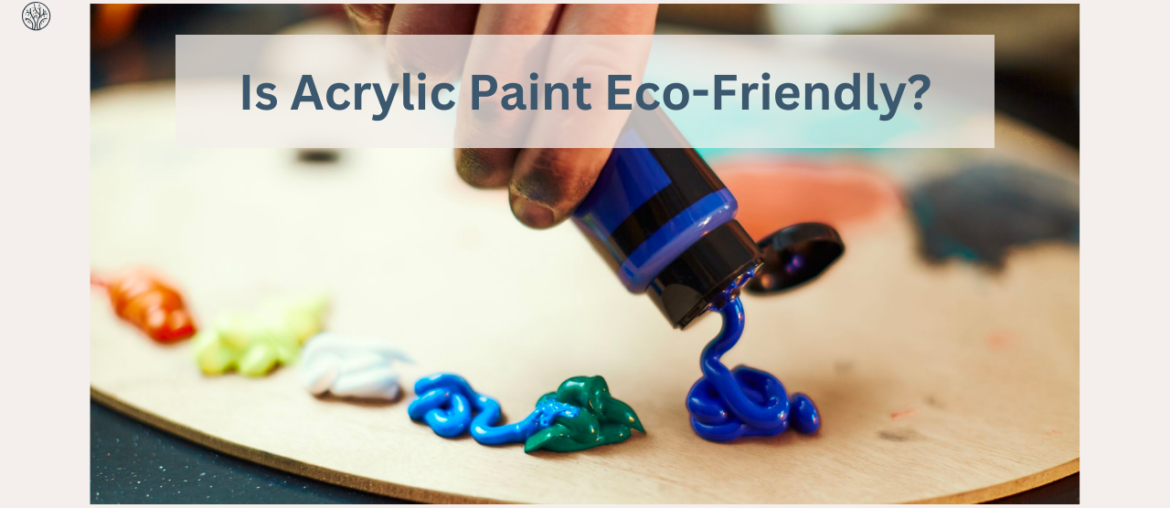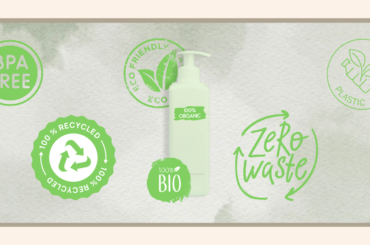Acrylic paint, with its vibrant hues and versatile applications, has become a favorite among artists worldwide. However, this artistic medium also raises crucial questions. Is acrylic paint eco friendly? Is acrylic paint bad for the environment?
In this article, we’ll explore the environmental implications of acrylic paint and suggest alternative options available for environmentally conscious artists.
What Is Acrylic Paint?
Acrylic paint first appeared in Latin America in the 1920s when artists needed paint that could dry quickly and withstand outdoor conditions for murals. They created acrylic paint by mixing pigments and synthetic resin.
The key ingredient in acrylic paint is a polymer, a long chain made up of repeating chemical units. This chain forms from small building blocks called monomers, such as methyl methacrylate (MMA), ethyl acrylate (EA), and butyl acrylate (BA). These monomers link together through a process called polymerization, often triggered by compounds like benzoyl peroxide. This polymerization creates a sturdy structure that serves as the foundation of the paint.
To turn this polymer into paint, it gets mixed with a solvent, usually water. Pigments are then added to give the paint its color. These pigments can be made from various inorganic and organic compounds, including substances like titanium dioxide and phthalocyanine blue. Additionally, different additives, like surfactants to help mix the paint and rheology modifiers to control its properties, complete the paint’s formula.
Is Acrylic Paint Eco Friendly?
The question of whether acrylic paint is eco friendly is complex and multifaceted. To evaluate its environmental impact, we must consider several factors:
VOC Emissions
Acrylic paint is considered more environmentally friendly than some other types because it lacks harmful elements. However, it still has issues. Volatile Organic Compounds (VOCs) found in acrylic paint can evaporate into the air and contribute to air pollution and smog.
Acrylic paints often have solvents and thinners that release VOCs when used. While there are low VOC and water-based options, acrylic paints can also contain dangerous pigments like heavy metals and toxins. These substances lead to greenhouse gas emissions, toxic waste, and energy use. Additionally, the production and disposal of acrylic paint create more environmental problems because it’s essentially a plastic product.
Recycling
Acrylic paint, like other plastics, is technically recyclable, but recycling it can be challenging due to its plastic nature. Leftover paint must be allowed to dry out completely before disposal at a local household hazardous waste collection point. It may end up in specialized landfills or be incinerated. Despite this recyclability, acrylic paint doesn’t align with the principles of sustainability.
Sustainability
Sustainability, as defined by the United Nations, is about fulfilling today’s needs without harming the ability of future generations to meet their own needs. Acrylic paint doesn’t meet this standard for a few reasons:
- Energy Use:
Making acrylic paint requires a lot of energy. Steps like mixing chemicals and purifying the paint need a ton of electricity and heat. This adds to its carbon footprint, or how much it harms the environment. The materials used, like solvents, usually come from fossil fuels, making the energy problem even worse.
- Waste Disposal:
Disposing of waste from acrylic paints can harm the environment. When you clean brushes and equipment, the rinse water can contain harmful paint and chemicals, hurting aquatic life and adding to ocean plastic pollution. Acrylic paint waste can also damage soil by slowing down helpful bacteria, reducing plant nutrients, and changing soil composition.
- Air Pollution:
Acrylic paint can cause air pollution when exposed to heat, releasing harmful substances like formaldehyde. This highlights the need for good ventilation in art spaces to protect people’s health.
Biodegradability
Being eco friendly means using things that can naturally break down over time, which is called biodegradability. Sadly, acrylic paint isn’t biodegradable like other eco friendly materials.
Acrylic paint is made from strong, synthetic polymers that don’t break down easily in nature. These polymers, similar to plastics, last a long time without breaking apart. So, when acrylic paint is thrown away, it stays in the environment for a very long time, causing pollution.
Is Acrylic Paint Hazardous Waste?
Even tho acrylic paint is not considered hazardous waste, you still need to dispose of acrylic paint properly.
The main issue with acrylic paint is that it lasts a long time. If you toss it in the trash incorrectly, it can harm the environment, especially if rainwater carries the paint from landfills into the groundwater.
Also, dry acrylic paint contains acetic acid, which can be harmful if you breathe it in. It can irritate your eyes and cause discomfort if you have acrylic particles in the air.
So, always handle acrylic paint with care and avoid making dust or particles when you dispose of it or clean it up.
Is Acrylic Paint Bad For The Environment?
It’s obvious that acrylic paint is harmful to the environment. It’s not just about getting rid of it; spills are really tough to clean up, whether it’s on walls, fabrics, or floors. Acrylic paint stains are stubborn and hard to remove. Additionally, the pigments in acrylic paint don’t break down naturally, so they build up in the environment over time, making the ecological impact even worse.
Moreover, acrylic paint has harmful substances such as alcohol, ammonia, and benzene. Benzene is especially dangerous as it harms the environment and is toxic to animals. These chemicals, when released, can pollute the air and water, risking the health of both humans and animals.
Eco Friendly Alternatives to Acrylic Paint
Now you have the answer to the question: ‘Is acrylic paint eco friendly?’, you may want to move on to other options that are more environmentally friendly.
So, what is an eco-friendly alternative to acrylic paint? Unfortunately, there is no true eco friendly alternative that replicates all the properties of acrylic paint. In fact, you can use oil paint as an alternative to acrylic paint.
But, while oil paint is inherently natural, the mediums associated with it, such as mineral spirits, release harmful fumes. In this case, there are some other promising options for you to choose from:
Watercolors

Watercolors have a small environmental footprint. Unlike acrylic paint, watercolors don’t have plastic in them, so they break down naturally and are safe for the environment. Although some watercolor pigments may have tiny amounts of harmful substances, they are so diluted in the paint that they are much less harmful than acrylics.
However, while watercolors are known for being eco friendly, there’s a catch: the paper used with them. Watercolor paper, which is crucial for this art form, is usually made from trees.
This raises worries about deforestation and the loss of nature’s resources. Artists often have limited choices for watercolor paper, as few alternatives can match the needed quality and texture for watercolor techniques.
Biodegradable/Eco Friendly Acrylic Paint
Some companies have seen an interest in eco friendly art supplies and developed eco friendly acrylic paint for artists. These paints use things like plant-based polymers or biodegradable resins, which are natural or can be renewed.
Eco friendly acrylic paints are made to break down easily in nature, reducing their harm over time. Artists who care about the environment can think about using these earth-friendly options. You can find this eco friendly paint at Home Depot, Natural Earth Paint, or many other online stores.
Egg Tempera

Egg tempera, developed around 1400-1450, involves mixing egg yolk, water, and pigments. The egg yolk contains lecithin, a natural substance that helps blend the pigments smoothly. When combined with water and pigments, lecithin coats the pigment particles, preventing clumps and ensuring stability.
As the paint dries, the water in the mixture evaporates, leaving a durable layer of pigments held together by the dried egg yolk. This method creates beautiful, radiant artwork and addresses environmental concerns linked to acrylic paints due to their long-lasting properties.
Egg tempera offers more than just environmental benefits. Its matte finish gives the artwork a special depth, captivating viewers with a subtle glow. Moreover, it lasts a long time, ensuring that artistic creations stand the test of time, serving as a testament to creativity and sustainable artistry.
Cellulose
Cellulose is a great option instead of acrylic paint. It comes from plants like wood or cotton and can thicken paint because it can absorb water. Cellulose is not as expensive as synthetic binders, so it’s a good choice for artists who don’t want to spend too much.
However, artists should be aware of some challenges when working with cellulose-based paints. These paints can be tricky to dissolve in water, which can result in lumps or an uneven texture if not mixed properly. Artists who want to use cellulose-based paints may need to do some experimentation to get the results they want.
Another consideration is cellulose’s susceptibility to mold growth if not used promptly or stored properly. Proper storage and usage guidelines are crucial to harnessing its eco friendly benefits effectively.
Milk Paint Eco Friendly
Milk painting, or casein painting, uses a natural substance called casein, which comes from cow’s milk. For over eight centuries, artists have used casein as a reliable adhesive and binder.
Milk paint, when made without harmful chemicals, is eco friendly. It uses caseins in milk as a natural binder, which mixes well in water and carries calcium and calcium phosphate. This makes it a great choice for artists, as artworks painted with milk paint age beautifully over time.
Furthermore, milk paint’s biodegradable nature ensures that it poses minimal harm to the environment. By choosing milk paint, artists not only contribute to reducing plastic waste but also support a time-honored tradition.
Bottom Line: Is Acrylic Paint Eco Friendly?
So, is acrylic paint eco friendly? In short, no. While acrylic paint offers unparalleled creative possibilities, its environmental impact cannot be ignored. Artists, manufacturers, and consumers must collectively explore and invest in eco friendly alternatives, thereby fostering a sustainable artistic ecosystem. By making informed choices, the artistic community can continue to thrive while preserving the natural world for future generations.





